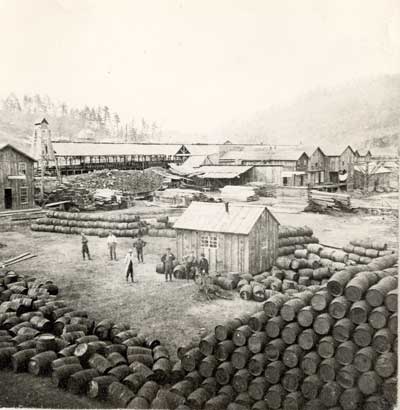 |
||||||
Early Scarcity of Barrels
In the first 5 or 6 years of the 1860's in North America, crude oil and refined products were transported largely in wooden barrels although simple bulk boats carried some of the oil for part of its journey if navigable streams were close by. From the very outset barrels were in short supply. Even Drake had to sweep the cities and villages for barrels to package the oil from his 1859 pioneer oil well. After cleaning Titusville out of country barrels, he managed to get 28 or so in Meadville, Pennsylvania, and then put in standing orders for more.
The pace of drilling was swift in the oil region and a new oil strike of some magnitude could outstrip the coopers' capabilities. Cooperages sprang up quickly in the oil settlements, but a strong flowing well such as the Empire well (great name!) which came in at a rate of 3300 barrels per day in 1861 (and was followed by more big ones), swamped all the barrel works. The Empire well also started the first oilfield bust because the high initial production drove the local price of oil down to 10 cents a barrel. The wooden barrel at about $1.75 to $2.00 in 1861 became much more valuable than its contents and the coopers knew enough to demand cash. They were not to be satisfied with drafts against oil shipments or any other form of payment. Eventually the price of crude righted itself and all barrel works sold barrels as fast as they could make them.
 |
Stacked oil barrels (foreground) and barrels on railway loading platform (rear) at Shaffer Farm, Oil Creek Valley, 1860's. Shaffer was a boom town, a post office and R.R. station, now a ghost. From collection. |
![]()
| © 2004, Samuel T. Pees all rights reserved |
|